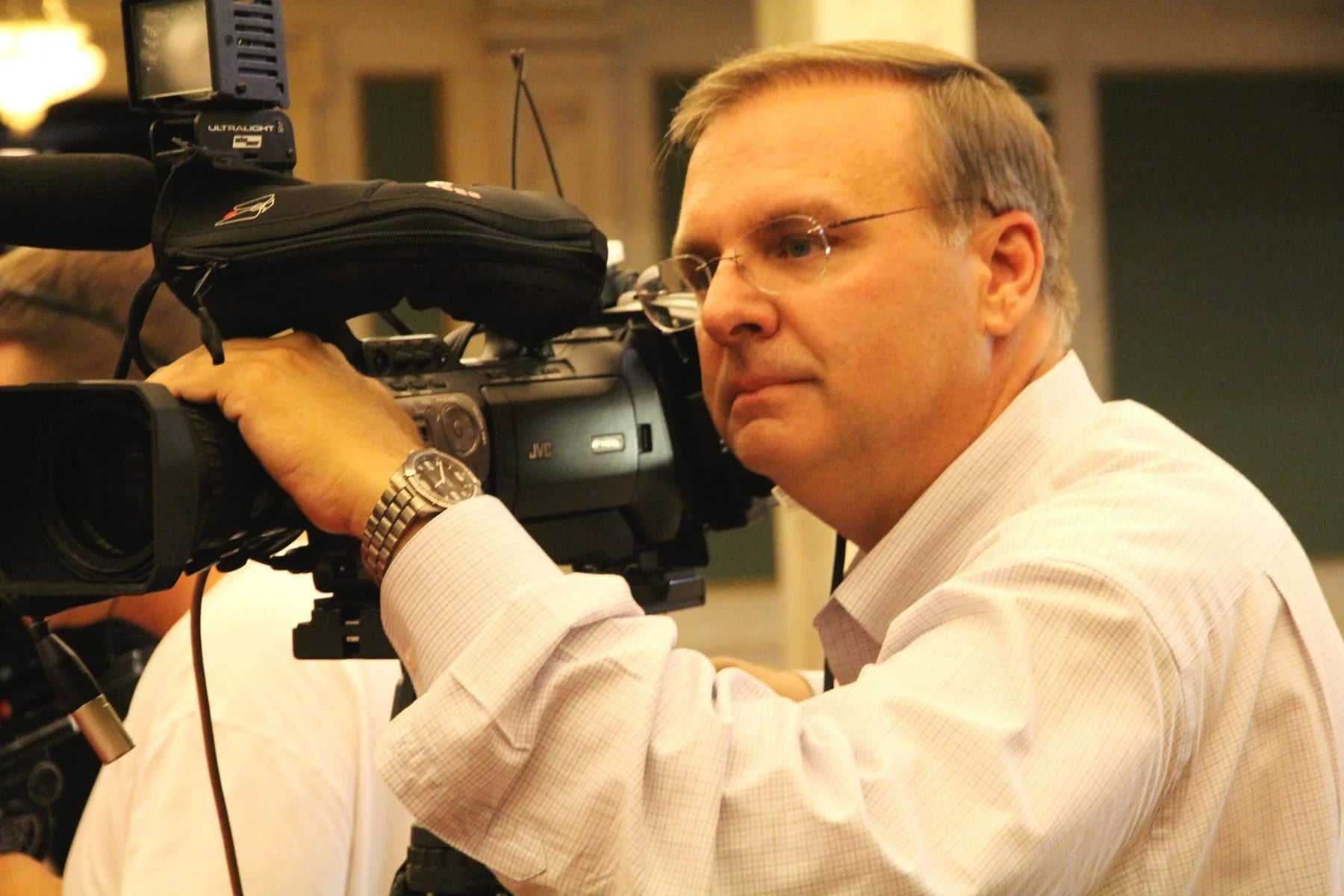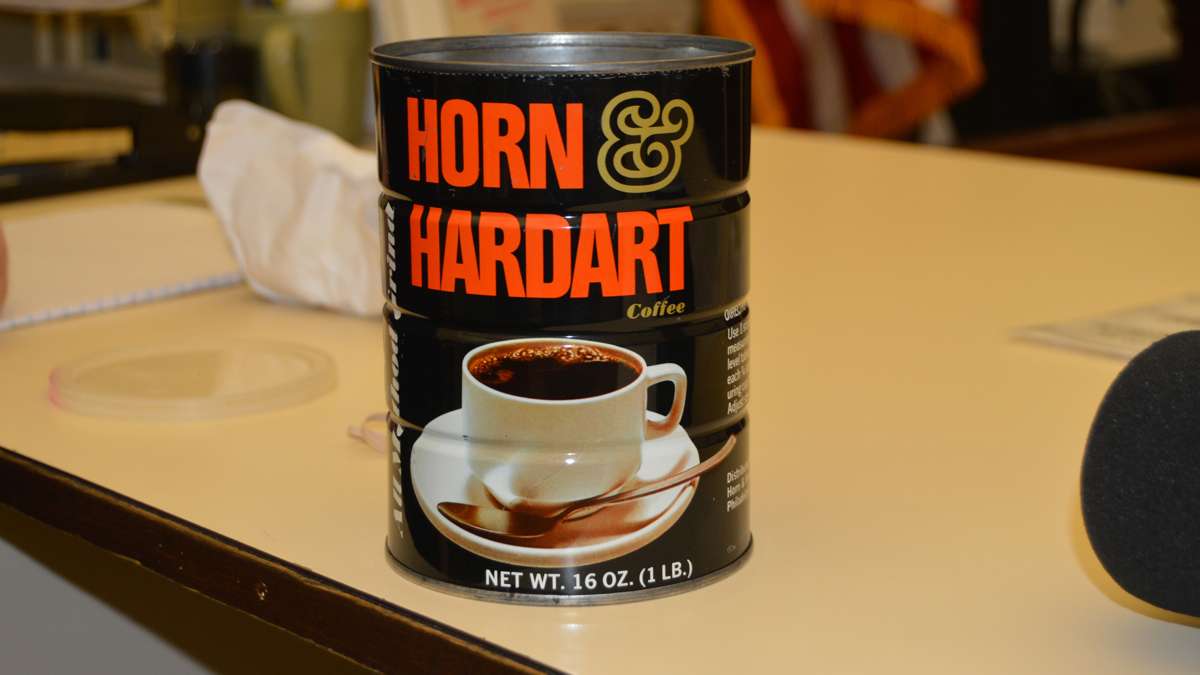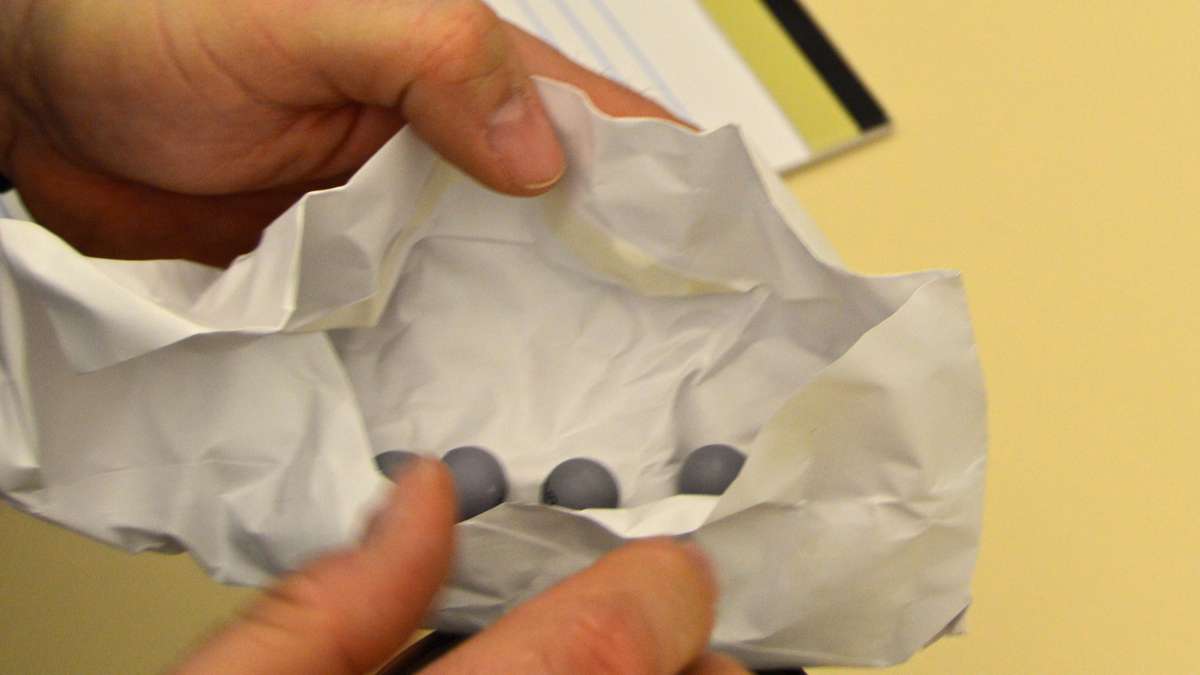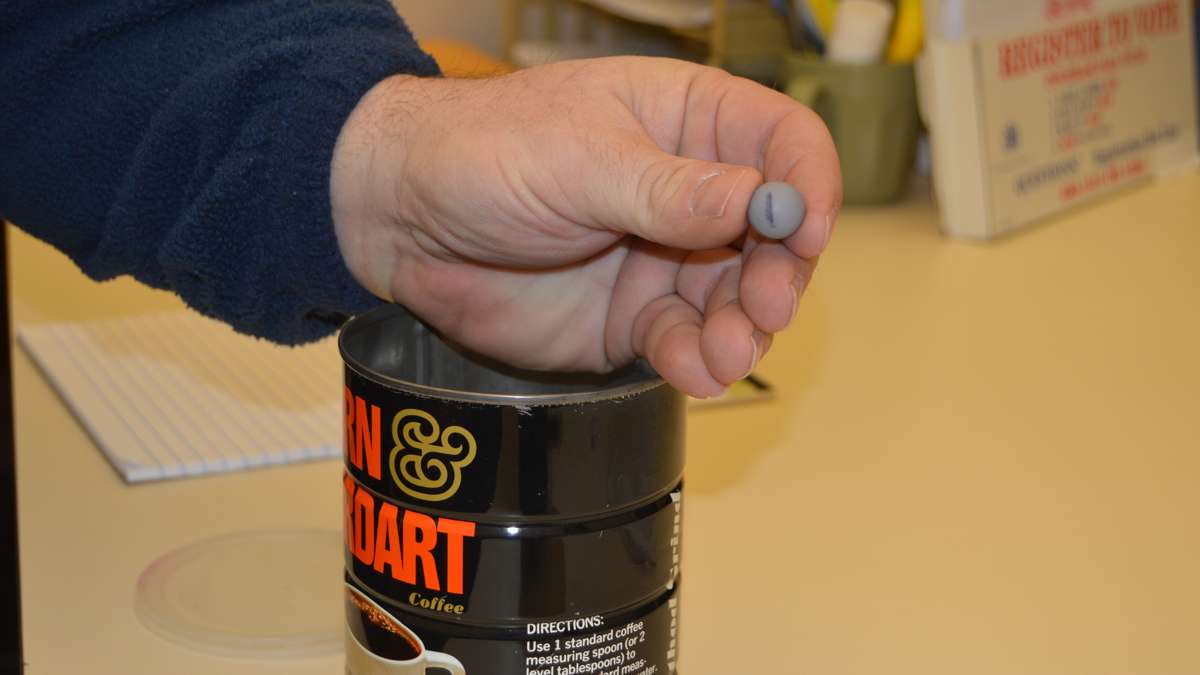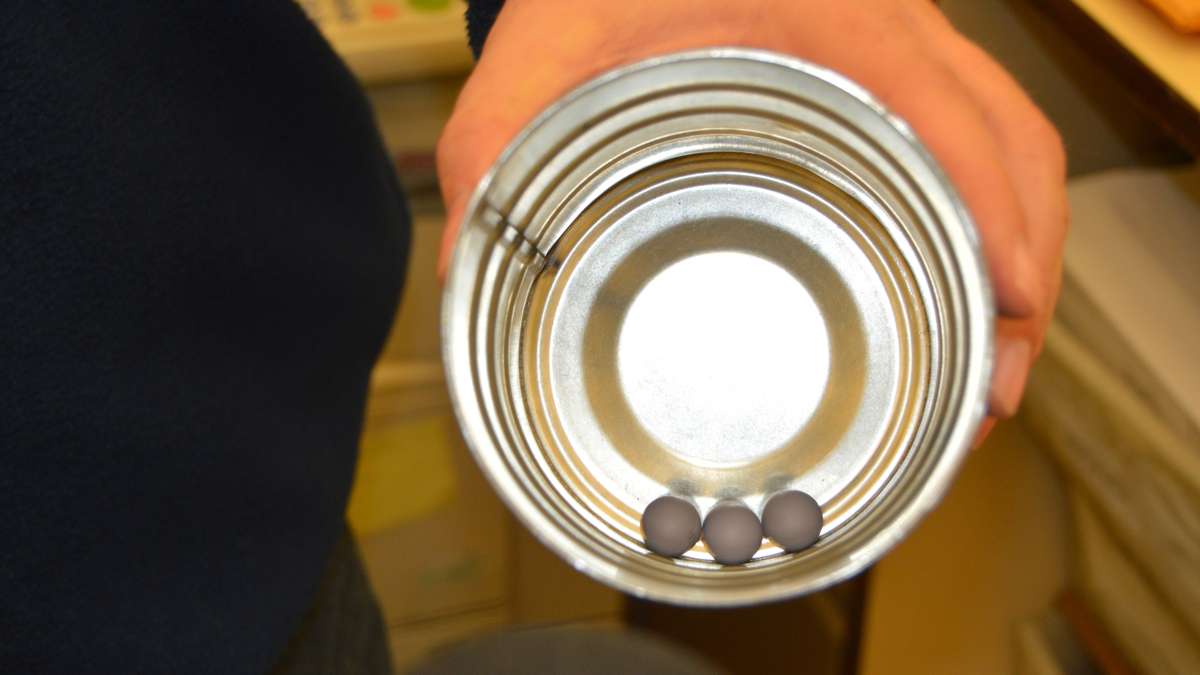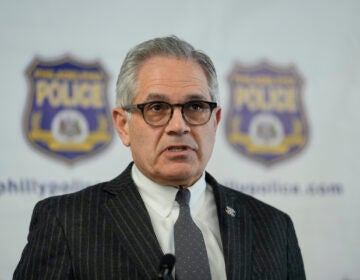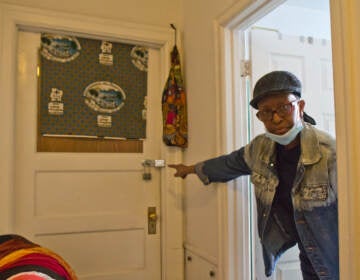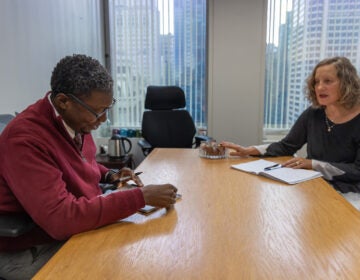Vintage coffee can holds the secrets to Philly ballot positions
ListenThese days, electronic voting machines and apps that help you find your polling place make elections much different from decades ago.
But in Philadelphia, an antique container still plays a very vital role.
Candidates for elected office in Philadelphia may have heard a call to serve their community. Eventually, all will hear the clatter of small spheres rattling about in an old tin can. Reaching into the can for one of the numbered balls is the time-honored way of determining ballot positions, said Tim Dowling, acting supervisor of city elections.
“Whoever files their petitions first gets to draw first,” he explained. “If they don’t want to draw first, then they go to the back to of the list.”
A vintage Horn and Hardart’s coffee can, which has been around for more than four decades (although no one knows exactly how long), serves as the dispensary. In between elections, it’s secured in a City Hall safe.
“The balls have changed over the years, but the can has stayed true,” said City Councilman Bill Greenlee. “Sometimes they used coat-check tags, sometimes they used different kinds of balls.
“We got new kinds of balls for this year. They are easier to see and they are a little bigger than the balls they used in 2011,” he said.
The coffee can lottery has been good to Greenlee — he’s won prime real estate near the top of the ballot twice.
“Two and one … so far, so good,” he said. “I absolutely hope I’m not jinxing it.”
A bad pick for ballot position can be the end of the road for some candidacies, Greenlee said.
“If a person who isn’t really well known and is taking a shot at this to see how they come out on ballot position, if they get in the top six or seven, they will probably stay,” he said. “If they get 43, they probably will not.”
Dowling says the prime positions are near the top of the grid of offices up for grabs.
“To me, the lucky spots would be your first column depending how far it goes down and across the top,” he said. “That’s the most visual end of the ballot. If you are buried in the middle, it gets a little hard.”
This year’s ballot is not expected to be as crowded as it was in 1979 when the coffee can was much newer. There were so many candidates in that year’s primary, elections officials had to offer separate voting machines for Democrats and Republicans.
That would be a problem now because the machines used in Philadelphia are only used in Delaware and Kentucky and rentals would be difficult.
WHYY is your source for fact-based, in-depth journalism and information. As a nonprofit organization, we rely on financial support from readers like you. Please give today.


